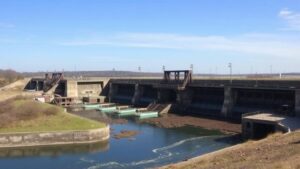Using Regional Geological Surveys to Locate Hidden Gemstone Deposits
Using Regional Geological Surveys to Locate Hidden Gemstone Deposits
The exploration and extraction of gemstones have been critical economic activities for various regions around the world. As traditional gemstone deposits become depleted, the need for advanced techniques in locating hidden gemstones has become paramount. Regional geological surveys serve as a vital resource in identifying potential gemstone deposits, utilizing geological knowledge and modern technology. This article examines the methodologies employed in geological surveys, significant case studies, and the implications of these practices for mineral exploration and extraction industries.
Understanding Geological Surveys
A geological survey involves the systematic examination of Earths materials, including soil, rock, and minerals, with the objective of understanding their distribution, nature, and origins. Geologists utilize various techniques to gather data that inform resource management and exploration strategies. Surveys can be regional, focusing on broader areas, or more localized.
- Remote Sensing: This involves gathering information about geological formations from satellite or aerial images.
- Geophysical Methods: Techniques including magnetic surveys, gravity surveys, and seismic reflection help to understand subsurface structures.
- Geochemical Analysis: Soil and water samples are tested to identify indicator minerals that may suggest the presence of gemstones.
Historical Context and Geological Significance
The significance of regional geological surveys in gemstone exploration is underscored by several historical developments. For example, the 1923 Australian Geological Survey led to the discovery of vast deposits of opals in Coober Pedy, which is now one of the worlds largest opal-producing areas. Similarly, surveys in the early 1900s in Myanmar revealed rich deposits of rubies and sapphires, contributing significantly to the global gemstone market.
According to the United States Geological Survey (USGS), an estimated $23 billion worth of gemstones were mined globally in 2022. The importance of investing in geological surveys is evident, as they provide the foundational data necessary for successful exploration.
Case Studies in Gemstone Discovery
Numerous case studies illustrate the efficacy of geological surveys in discovering hidden gemstone deposits.
- The Montana Sapphire Rush: In the early 2000s, geological surveys in Montana led to the identification of rich sapphire deposits. Geologists utilized geochemical analysis to pinpoint areas with high concentrations of sapphire-bearing gravel. This resulted in a resurgence of mining activity, greatly benefiting the local economy.
- The Tanzanian Emerald Discovery: Regional geological surveys in the late 20th century identified significant emerald deposits in the Merelani Hills. By applying geophysical methods to identify certain geological formations, miners could target specific areas for extraction.
Challenges and Limitations
While regional geological surveys are invaluable, they are not without challenges. One primary limitation is the accessibility of remote areas where gemstones are often located. Also, the financial cost of comprehensive surveys can be prohibitive for smaller mining companies.
Plus, the interpretation of geological data can vary, leading to miscalculations in potential gemstone locations. So, it is crucial that geological surveys are conducted by trained professionals using standardized methodologies to minimize errors.
The Future of Geological Surveys in Gemstone Exploration
Looking ahead, advancements in technology are poised to enhance regional geological surveys dramatically. Techniques such as LiDAR (Light Detection and Ranging) and advanced geospatial analysis software are enabling geologists to create highly detailed topographical maps and models of subsurface geology. These technological innovations will improve the accuracy and efficiency of gemstone discovery.
For example, integration of artificial intelligence (AI) with geological survey data can facilitate predictive modeling of gemstone locations, allowing for more targeted exploration efforts.
Conclusion: Implications for the Gemstone Industry
The comprehensive use of regional geological surveys represents a crucial strategy for locating hidden gemstone deposits. Historical case studies demonstrate the economically transformative potential of these methodologies. As technology continues to advance, the gemstone industry can expect improved exploration capabilities. Investing in geological surveys not only offers the prospect of significant economic returns but also contributes to sustainable practices in resource management.
In summary, the effective implementation of geological surveys will provide invaluable insights into potential gemstone deposits, ensuring that the industry can adapt to the challenges of resource depletion while still meeting global demand.



